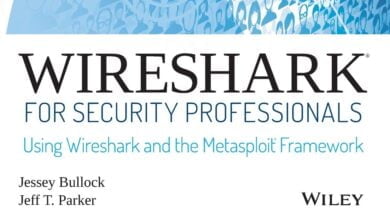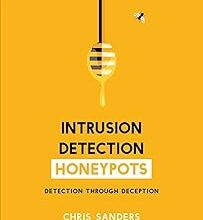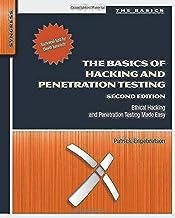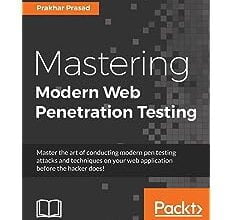The Art of Network Penetration Testing: Taking over any Company in the World
Author: Royce Davis

Rating: 4.5/5
In the realm of ethical hacking and bug bounty hunting, having a guidebook that serves as a Rosetta Stone for network penetration testing is a game-changer. The Art of Network Penetration Testing by Royce Davis earns a phenomenal 4.5/5 on our Hack-o-meter and rightly deserves its stellar reputation.
Methodical and Insightful Approach
The first aspect that catches any reader’s attention is Davis’s systematic methodology, which can be encapsulated in his motto, “Understand first, act second.” His structured, step-by-step methodology is a godsend for those who are looking for a structured approach to hacking. From vulnerability assessment to post-exploitation activities, the author meticulously walks the reader through every phase, detailing the “what,” “why,” and “how” of each step. This methodological rigor ensures that even a novice can grasp the complexities of penetration testing without feeling overwhelmed.
Breadth and Depth of Content
The book’s second strongest point is its in-depth coverage of network penetration testing. Davis outlines various tactics, techniques, and procedures, from spear-phishing attacks to SQL injections. One of the book’s hallmark features is its thorough explanation of ethical hacking stages, such as reconnaissance, exploitation, and reporting.
Practical Examples from the Book
- Reconnaissance with Nmap: One notable example in the book is Davis’s in-depth tutorial on using Nmap for reconnaissance. He provides readers with a step-by-step guide to deploying Nmap effectively, showcasing the practical use of this versatile tool in identifying live hosts and open ports. This real-world example not only reinforces the book’s comprehensive approach but also enables readers to perform their reconnaissance efficiently.
- Exploiting Buffer Overflows: Another example that stands out is the book’s treatment of buffer overflow vulnerabilities. Davis goes beyond merely explaining what buffer overflows are, offering readers a hands-on tutorial for exploiting such vulnerabilities in controlled environments. This goes a long way in elevating the book from a theoretical discourse to a practical guide.
- Social Engineering Attacks: The book also excels in discussing the human aspect of security vulnerabilities through its chapters on social engineering. Davis illustrates practical examples of spear-phishing attacks and pretexting, giving readers a rounded understanding of how a network can be compromised, not just technically but also through human interaction.
An example from the book that stands out involves a deep dive into ‘client-side attacks.’ Davis discusses the common types, from browser vulnerabilities to document-based exploits, all while reminding readers that “Hacking is a game of chess, not checkers.”
Ethical Emphasis
In an age where ethical considerations often fall by the wayside, Davis stands out with his emphasis on ethical hacking. One of his recurrent themes is, “We are the shepherds of cyberspace.” The author underscores the need for integrity and ethical conduct in all hacking activities. He often refers to real-world scenarios and implications to drive home the point that ethical hacking is a force for good, safeguarding our digital world against malign actors.
Where It Falls Short
No masterpiece is without its imperfections, and this book is no exception. For the absolute beginner, the complexity of certain topics can be daunting. While Davis makes an earnest attempt to break down complicated concepts, the absence of a more in-depth foundational explanation can sometimes leave novices feeling like “The first step is often the steepest.”
Another criticism pertains to the depth of the real-world examples provided in the book. For instance, while Davis does delve into various types of attacks and how to carry them out, the book would have benefited from more detailed, step-by-step walkthroughs of these attacks. Offering more real-world examples would make the guide more interactive and serve to engage the reader more effectively. As the saying goes, “A tool is only as good as its wielder.”
Skill Level Compatibility
When evaluated in the context of skill progression from beginner to expert, the book serves as a rich reservoir of knowledge. For novices, it lays a strong foundation. For the intermediate or “competent” stage, the book offers an array of advanced tools and techniques to finesse their skills. Even experts have something to gain from Davis’s advanced tactics and methodologies.
Conclusion: An Ocean of Knowledge With Room For Improvement
In summary, The Art of Network Penetration Testing by Royce Davis is an indispensable guide for anyone interested in ethical hacking and network penetration testing. Its systematic approach, exhaustive coverage, and ethical grounding make it a seminal read in the cybersecurity space. However, a few areas for improvement could make this good book a great one. According to the author, “Your journey has just begun.”
So, to all aspiring ethical hackers and bug bounty hunters out there, heed Davis’s advice: “Patience is the companion of wisdom.” Continue to learn, adapt, and evolve because, in the world of cybersecurity, the learning never stops. Let’s make each keystroke count as we work to safeguard our digital universe.




